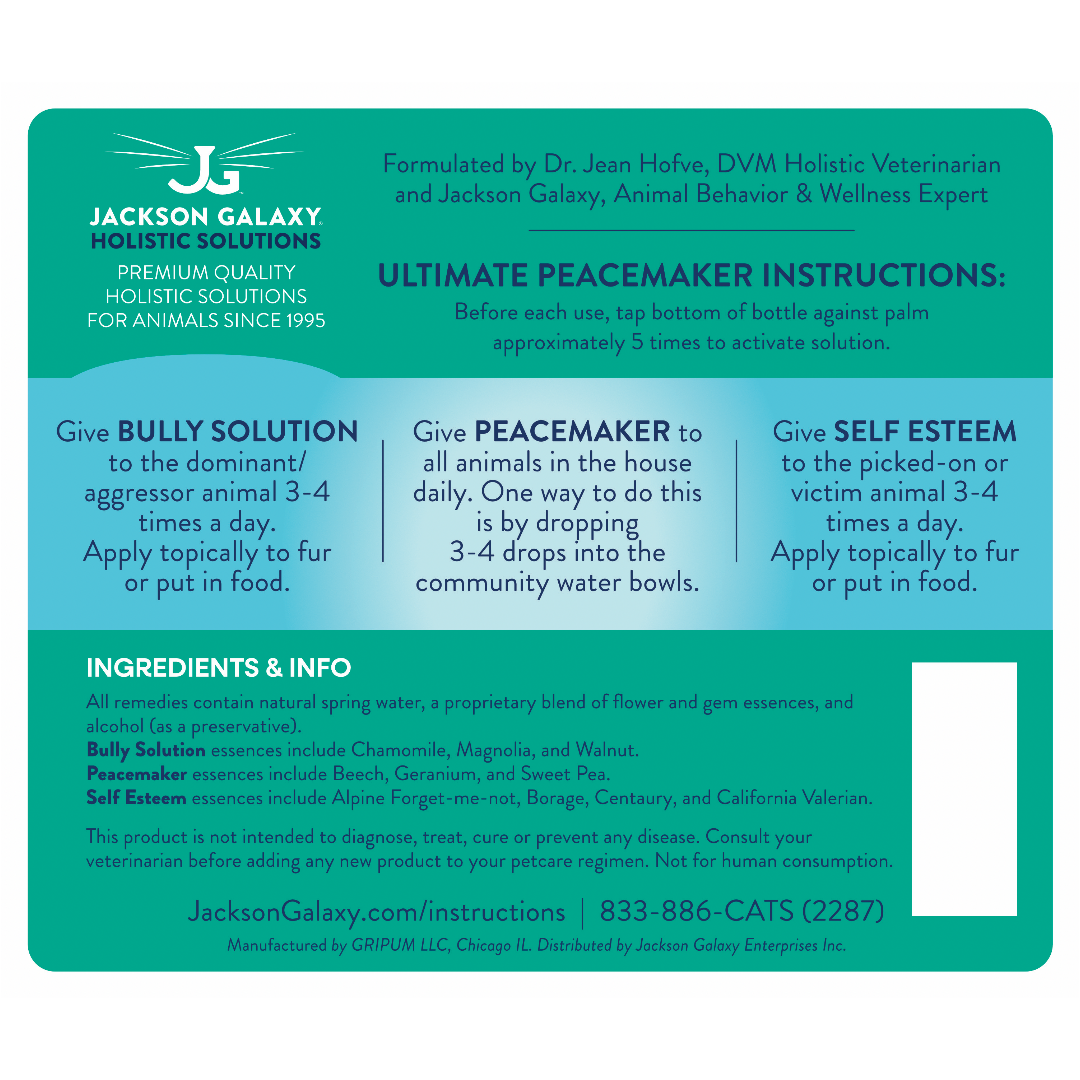I’ve made tons of videos about introducing cats, but what about introducing one group of cats to another group of cats? Things can get tricky with so many personalities in play - but don’t worry, I’m here to help! Whether you’re moving into someone else’s home or starting fresh in a space that is new to everybody, follow these tips to ensure a successful “bunching”!
Moving sucks! According to Psychology Today, moving is one of the most stressful events in our lives, preceded only by divorce or a death in the family. Now take all that stress and imagine you’re Brady Bunching.
What is Brady Bunching?
Remember the TV show The Brady Bunch? In The Brady Bunch, two families come together under one roof to form one big bunch. But this blog is about cats, so I'm going to talk about how to integrate two groups of cats - because if you think you get stressed out by moving, you haven’t met a cat!
Why do cats get stressed by moving?
When you move, everything is in boxes, and your routines are totally disrupted. “Where is my toothbrush? What drawer holds the silverware? I can't find my coffee maker!” Routine is super important to cats as well - it gives them a sense of stability and security.
But on top of that, cats derive all of their confidence from ownership of territory, which they define first and foremost through their scent. So when they’re in an unfamiliar space with other cats, it’s like trying to find your toothbrush blindfolded and surrounded by hostile strangers.
What Brady are you?
Like I said before, moving sucks - but there’s a process that will help you navigate it. But first identify what type of bunch you are:
The Classic Brady: You and your cats are moving into a home with other cats.
The Double Brady: You and another person are moving into a brand new space with both of your cats.
I’m just leading you to the water here, but how you drink is up to you. If you want to dive deeper into some of these concepts, I’ve got other videos that will help - but watch this first, then go back!
How long does it take to introduce cats?
Is there a straightforward, surefire way to make everyone love each other? No, because any bunch is made up of individuals. There are curveballs, and you have to go at your cats' pace. But there IS a way to break it down - so no matter what you do, as long as you apply these concepts, you’re starting off on the right foot.
We’re breaking this down into bite-sized pieces so we have this timeline here:
BEFORE YOU MOVE > SETTLING IN > BUNCHING > EMERALD CITY
We’re going to introduce the cats through scent, so you’ll have to work your way up to visual contact and then eventually physical contact.
But the best place to start is before you start. So let’s get started!
Step 1: Before you move
Before you move, get your cats on the same routines - much of which revolves around food. If you free-feed your cats, STOP! Feed meals. If you give treats to your cats all the time, STOP! Give your cats treats at the same time of day. I know this sounds like tough love, but trust me. Food is the ultimate motivator, and the way we get two sets of cats synced to a common rhythm.
As you start to pack up your things, resist the urge to throw away any of the cats’ stuff. Remember, scent is super important to cats, so it will help the transition if they are surrounded by familiar items that smell like them. And where do we put those items? In their basecamp!
Step 2: Settling in
Basecamp is a designated safe space to help cats feel secure as they adjust to a new home. They’ll stay in their basecamp for at least the first few days - but their basecamp can always be there for them to retreat to.
In the Classic Brady, you only need one basecamp for the newcomers. You don’t want the resident cats to think, “They came and I lost something.” For the Double Brady, you’ll have two basecamps, one for each set of cats, because no one owns the space yet.
Where you set up basecamp depends on your home and your Brady scenario. If you are going to share a bedroom with the other human, avoid using the bedroom for basecamp if possible. It’s loaded with your scent so it’s a very important piece of the territory, and we don’t want any group to feel too much ownership over the space.
Once they get into basecamp, you immediately get into your routines - mealtime, playtime, Cat TV time, and so on. It’s never too early to involve the new human in this, so they can start presenting meals, treats, and toys. The cats think, “I see you and I get my favorite things, so you can’t be a bad thing.”
Your cat will let you know when they’re ready to move onto the next step. If they are army crawling with tails tucked between their legs, hiding, freezing, not eating - these are all signs of fear. But if they’re confidently exploring the room, sniffing the door, sitting in the window, eating and eliminating predictably, seeking attention from you - they’re ready for a challenge.
Holistic remedies to help moving stress
When we go through potentially traumatic experiences like moving, we can use all the help we can get. That's why I make a line of flower essence remedies for cats. Stress Stopper is great during the move and the initial shock of being in a new environment. It will help bring the temperature down - and believe me, everyone's going to need that once you start bunching!
Once you begin the process of integrating the cats, use my Ultimate Peacemaker Set. Whether a cat is a bully, getting picked on, or if you just want everyone to get along, the three formulas in this set will address it all individually and as a group, helping you to build community across each group of cats.
Step 3: Bunching
We’re going to start by introducing through scent, which is much more important and less stressful for cats. The goal is to slowly replace suspicion and fear with positive associations.
Work toward feeding both sets of cats on opposite sides of a door. In the Classic Brady, feed at the door of the basecamp. In the Double Brady, their rooms are separate, so who gets to come out? Whichever group is more confident, feed them at the door of the others’ basecamp. Over time, you’ll move the bowls closer and closer to the door so eventually there is only a couple feet of space between each set of cats.
The goal of this process is to build positive associations. The cats think: “I eat, and I smell you. The only time I eat is when I smell you. Therefore you can’t be a bad thing.” That applies to treats as well!
This is a good time to start breaking down the walls between “your” cats and “my” cats. Switch up who feeds each group so both humans are co-parenting.
Again, pay attention to their body language throughout this process. When everyone is eating comfortably on opposite sides of the door and showing confident body language, you can move onto the next step of introducing by scent: site swapping!
Site swapping
This is the part of the introduction process in which each group of cats gets to explore the other’s basecamp without ever laying eyes on each other.
In the Classic Brady, the residents’ de facto basecamp is the master bedroom. In the Double Brady, each group has their own basecamp, so you can switch them around. Put Group A in the bathroom or another place where they won't have visual access to the Group B. Move Group B into Group A's basecamp, then move Group A into Group B's basecamp.
The way the cats see it: “I smell you, I know you own part of this house, but I don’t have to see you. I’m not threatened by you, so you can’t be a bad thing.”
Always end it on a high note. If you start to see signs of shutdown or overwhelm, call it a day and go back into basecamp.
At the gates of Emerald City
As your cats become more confident with each other’s scents (again, look at their body language) we can start expanding basecamp. You can start letting the newcomers explore the rest of the house more freely without coming into contact with the residents.
All of your cats’ belongings in basecamp signify ownership, so we’re going to turn the whole house into basecamp by spreading these belongings out! Move high value belongings such as their cat tree, their mats, and one of their litter boxes into the common area. In essence, we’re creating one big basecamp for everyone: scents are mingled but the cats are still not getting visual access to each other.
The cats will think: “I own this, I share it, but I’m not threatened - so you must not be a bad thing.”
Visual access
The next step is to graduate from scent to sight. This is a big moment! We’re officially at the gates of the emerald city!
Open the door and put up a pet gate during feedings. We’re going to continue to get everyone acclimated. This is a process, so see my other videos or my book for more info. Keep paying attention to body language, and when the cats tell you they’re ready, we can start to remove the gate.
Step 4: Emerald City
The gates to emerald city are officially open! Remember, the emerald city isn’t necessarily cuddling and grooming together. It’s tolerating one another, and that starts with meals. To a cat, nothing symbolizes ownership more than where we eat - so start feeding meals in a common area. Remember, end on a high note. If things start to get edgy, pull it back.
As the newcomers spend more and more time in the common space, it becomes everybody’s space, and that is when we are officially a bunch! Congratulations!
Don’t forget that a bunch is about relationships, so each human should continue to build their individual relationships with the cats. You are co-parents, after all. And most importantly, this method provides a framework but you have to adapt the technique to the individuals. If you need more guidance, read my book or apply for a virtual consultation.
Happy bunching!

















